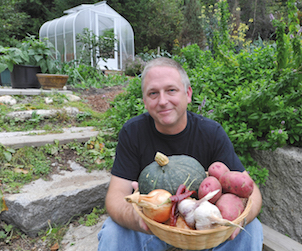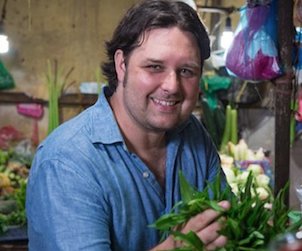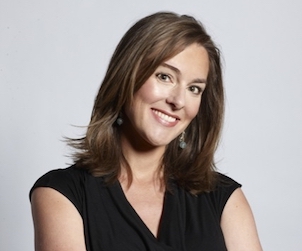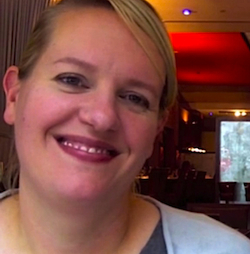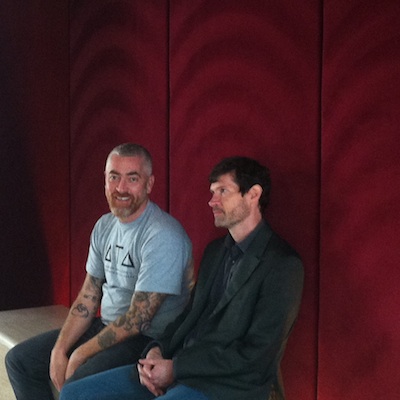Darcy and Randy Shore’s Home and Away cookbook distills a life of travel.
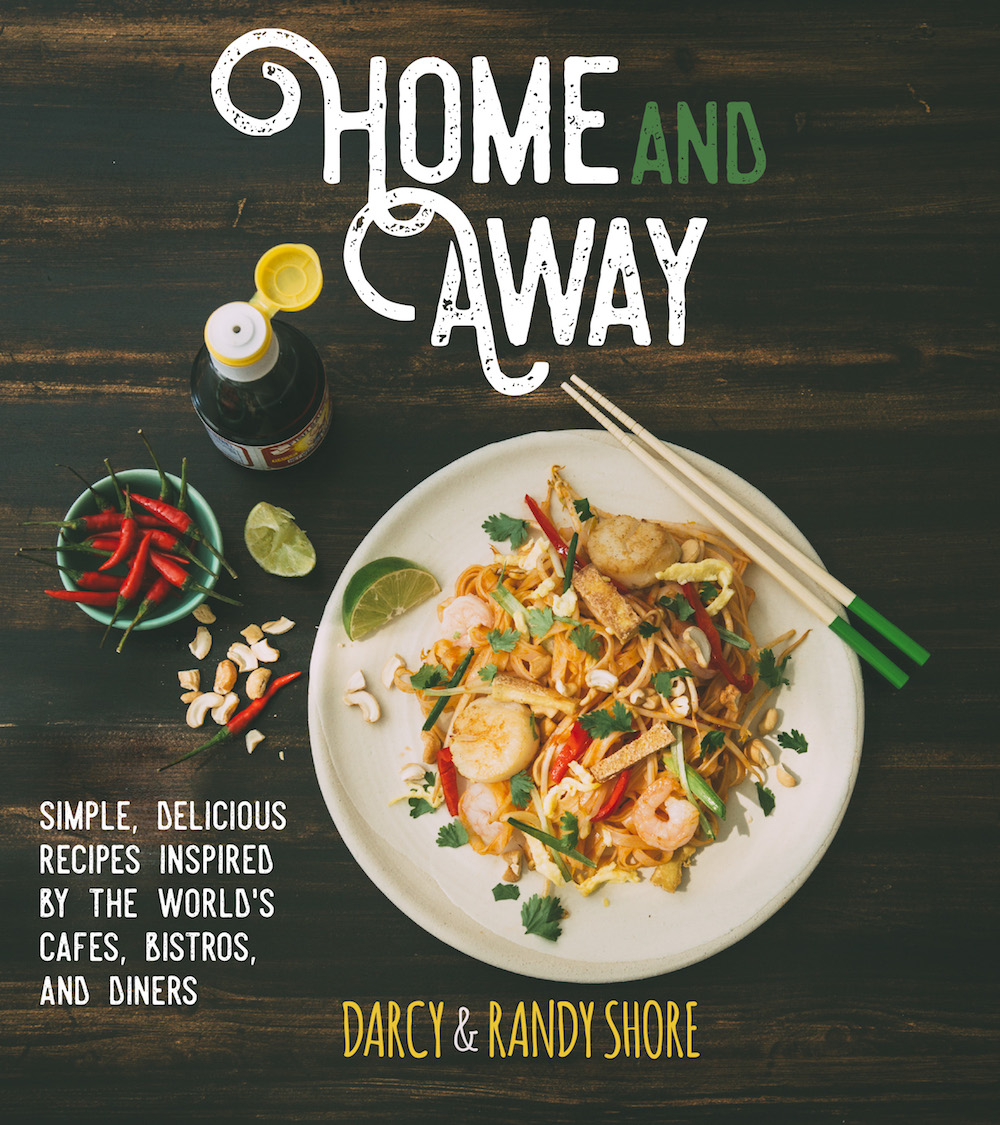
Randy Shore is a well known journalist and food personality in the West Coast, having written about food and sustainability issues for may years at The Vancouver Sun, where he writes a food focused column and maintains his Green Man Blog. With the background as a trained Shore’s latest project is a cookbook written with his wife Darcy that focuses on dishes the couple have found on their travels around the world, and interspersed with interviews with famous chefs about their own food memories called Home and Away: Simple, Delicious Recipes Inspired by the World’s Cafés, Bistros, and Diners.
I spoke to Randy Shore on the telephone recently to conduct the interview below. The interview has been edited for length, style and clarity.

Randy and Darcy Shore from Home and Away. Photo: Randy Shore.
Good Food Revolution: How did this book come about? I mean, how did put all of this together? It’s quite amazing. Have you been traveling the world and taking notes all your life?
Randy Shore: Well, thank you. I have been traveling all my life. I think I had visited 40 countries by the time I was 23 years old.And, no I didn’t take notes all the time! But I do have to tell you that the good memories of travel that I have, that have truly stood the test of time are often the ones of food. Maybe it’s just something about me, but I can remember what I ate every day that I was on the road over the course of three years.
Good Food Revolution: Wow. Is that because you’re really good at finding amazing things to eat?
Randy Shore: Well, it might be part genetics; just the way that I’m built. My dad taught cooking at my high school, as well as history, so I guess I’ve always been exposed to good food and creativity in the kitchen. That said, I also have a real passion for little hole in the wall restaurants: cafés and little shoe box sized places that serve maybe two or three types of dishes. The ones where they just do it so amazingly well that there’s a line-up. One of the things that I mention in Home and Away is that if you find a construction site and follow the hard hats at lunch time, it doesn’t matter where you are in the world, they’re going to show you where a great diner is.
Good Food Revolution: Aha. And to your point, the recipes in your book are not overly complicated or elaborate Michelin star stuff.
Randy Shore: Most of the recipes are very, very simple. What Home and Away trades on is the idea that we all recognize the diner tradition in North America. We all know where we can get a club sandwich, a good cheeseburger and fries, or a chicken pot pie. And that menu is carved in stone. It hasn’t changed in 70 years, essentially. But every country has its own diner tradition. Paris has the Brasserie, and those recipes haven’t changed in 70 years. In Korea they have noodle cafés, and those recipes haven’t changed in 70 years. Every country has its own version of this and it’s all simple, and it’s all satisfying. It’s seasoned, it’s not hoity-toity. It’s food that builds you up. People will always gravitate towards that, so you just have to watch for them. If you go on the road, or even in your own city, you can find them by looking for where the lineup is. In Vancouver there are a few ramen places where people are always lined up and it doesn’t matter what time of the day because those are the best noodles. It’s the same in Japan. I’ve seen lineups for a noodle shop in a bus station. It doesn’t matter where it is. When people know that it’s best place in town, they’ll line up to get it.
Good Food Revolution: Hmmm… I worry sometimes if it’s worth lining up for, but I’m going to trust you from your experiences and start lining up more.
Randy Shore: [Laughs.] Well, it’s a highly personal decision to decide whether it’s worth lining up to wait for a half an hour outside for noodles, and maybe you’d be just as well to go to the second best noodle shop, because it’s usually just around the block.
Good Food Revolution: OK, back to the book. You don’t need to line up to eat from Home and Away. Let’s get back to how you put it together.
Randy Shore: What my wife, Darcy, and I have done for years is try to replicate the foods we enjoyed while traveling at home. Sometimes it takes quite a few tries to get something really great that really recreates that experience, the flavour, the texture because we’re using North American ingredients. We use ingredients that people here are more or less familiar with. Maybe an exception would be that you might have to buy some harissa, or a jar of Sambal Oelek child sauce. But generally speaking these are all ingredients you can buy at the grocery store. And because my background is in North American cooking, I used techniques that everybody should know as well.
Good Food Revolution: So, this is really more about re-engineering a taste memory than learning whole new techniques?
Randy Shore: Sure. We have our own cooking vernacular in North America, so we employed that. That said, a great many places around the world have open kitchens. When you go to these diners and cafés and noodle shops the kitchen is quite often open to the dining room so you can see everything they’re doing and everything they’re using.
Good Food Revolution: Right, and as a trained cook you would be watching and would know most of what you were seeing.
Randy Shore: Sure. A lot of these techniques are pretty recognizable, and I have figured out ways to do them. If I have a chance to sit at a bar looking right into the kitchen, I’ll take it. These open kitchens are a form of quality assurance around the world. In North America we assume the kitchen is clean, but in a lot of the world you don’t make that assumption. The kitchen is open to you so you can see that it’s clean. And if we go to the Wayfare Tavern in San Francisco, Tyler Florence has taken that further. He has a row of seats that looks directly into the kitchen, and there’s no glass or anything so you talk to the cooks and ask questions while you’re sitting there. It’s brilliant.
Good Food Revolution: As a member of the group of people who like not just to use cookbooks, but also sit down and read them, I really enjoyed the chef interviews in Home and Away. How did that idea come about, and how did you get people like Mario Batali, Vikram Via or Michael Smith to tell you about their food memories?
Randy Shore: I had worked with Vikram Vij. I am a journalist by trade and I had done some stories and videos with Vikram Vij, so when the idea for Home & Away came together, I asked him if he would write the introduction for it. He said he’d be glad to help me but he had a book coming out at the same time and said he didn’t know if he wanted to write the introduction because it might create confusion in the marketplace. So he said, why don’t you just interview me and put that in the book? And I thought, that’s an interesting idea. We did that interview and it turned out pretty well. I also interviewed his partner and ex-wife, Meeru Dawalah, and that went well. So, I actually Tweeted to Mario Batali to see if he would be interested in doing an interview with me. And he said, yeah here’s my assistant’s email address, drop her a line and we’ll set up a time. And I got this long, brilliant interview. For the Mario Batali interview, I have got to tell you, I didn’t change a word. It’s not edited, it’s not trimmed or shortened in any way. Every word that he said to me is in the book, and it’s all just gold. He talks about his memories of running wild in the streets of Spain as a teenager, and eating soup made from guts from a bucket on a street corner in Vietnam – it’s so great! He is the same as me in that he’ll find the smallest, most out of the way places and if he sees a lineup, he’s in it even if it’s for guts soup. Anyway, it turned out that once I got Mario Batali on board, I started to write to other chefs like Anita Lo, or Edward Lee who has written a brilliant book called Smoke and Pickles. I was talking to Michael Smith on another project, so I said do you mind if interview you on another subject at the end of what we’re doing? He said, oh sure and had all these great food memories about being a kid and wanting to cook. Or Anita Lo who says her earliest memory is sitting on a porch in Malaysia and the juice from the fruit she was eating running off of her elbows. All these people have these amazing, vivid food memories and I think they make terrific reading. It’s a window into why they do what they do, and how they do it.
Good Food Revolution: That’s amazing. It all started because Vikram Vij was coming out with a book!
Randy Shore: I really wasn’t sure what the book was going to be about when I started. My first cookbook was a cookbook and a sort of gardening manual called Grow What You Eat, Eat What You Grow. It was all about taking whole, fresh food from the garden or the farmers market and engineer the into familiar and delicious dishes. Once that project was over, I continued to write down recipes and I continued to recreate my food memories from traveling all over the world. But I didn’t know that I was doing that. I was just writing down recipes and tweaking them over time. I sent the recipes over to my publisher, Arsenal Press, and I said have a look at this and see what you think of it, because I don’t know what it is. They kept it for a couple of weeks and then they came back to me and said, you know you seem to be re-engineering recipes from all over the world, and they kind of break down into ‘East Asia’, Africa and India, Europe, and the Americas, the four main geographic regions of the world. Once I had that concept in my head, then it was a matter of adding a soup, or a couple of salads, or a dessert for each region. There were some holes that needed to be plugged, but essentially the book was already there, except the chef interviews, which I think mesh into the concept of the book really beautifully. They all talk about travel experiences as being important part of their food memories.
Visit Randy Shore’s Facebook page for images and recipes from Home and Away.

